UX of hair
Brief: Design a way to intensify how we experience human hair
Research Methods: bodystorming and directed storytelling.
Team Member: Devin Wang, Anshu Agarwal, Kimberly Rodrigues, Carlotta Montanari, Ruoxi Song.
Time Frame: Oct.27-Nov.10
Research Methods: bodystorming and directed storytelling.
Team Member: Devin Wang, Anshu Agarwal, Kimberly Rodrigues, Carlotta Montanari, Ruoxi Song.
Time Frame: Oct.27-Nov.10
The first day we gathered, we talked about what do we think about hair from our experience. We discussed hair related to culture(some wear turban to cover hair), religions(offer hair after they got what they prayed for), disease(hair storage the disease people have), class(different hairstyle means different classes in the society).
After the discussion, we started to practice different researc methods as approaching to this
brief. We did questionnaire first, to generally understand how individuals feel about their hair, what’s the strong memories, and positive/ negative experience, also the feeling about body hairs.
After the discussion, we started to practice different researc methods as approaching to this
brief. We did questionnaire first, to generally understand how individuals feel about their hair, what’s the strong memories, and positive/ negative experience, also the feeling about body hairs.
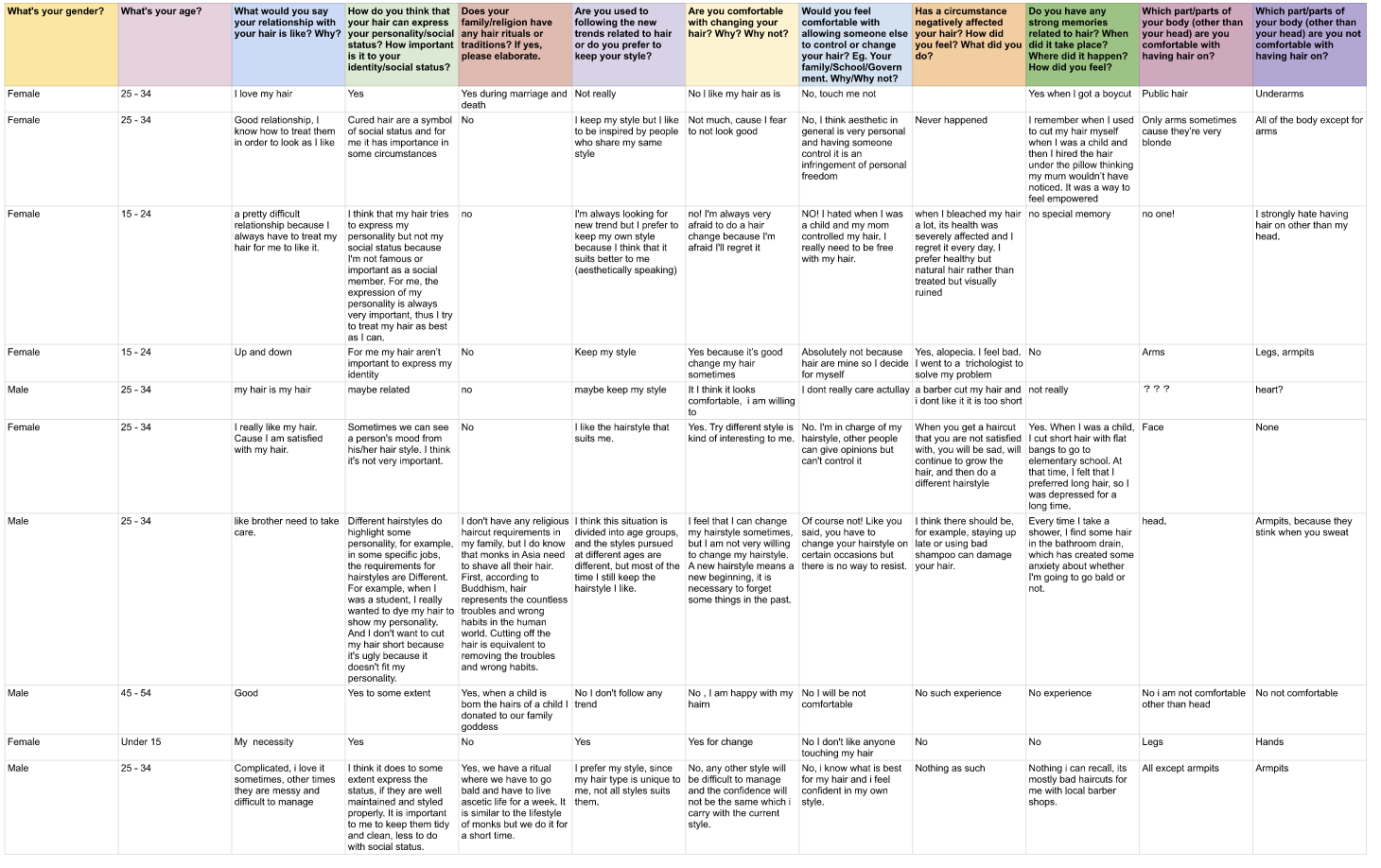
We received 18 responses with very different and interesting perspectives. After analyzing the answers, we found out for most people hair is for self-expression. Showing identities and personalities by having the hairstyle/color they want.
Bodystorming:
![]()

We also did a drawing activity of how people recognize others only through seeing the hair, and see if we can guess right who is this person.
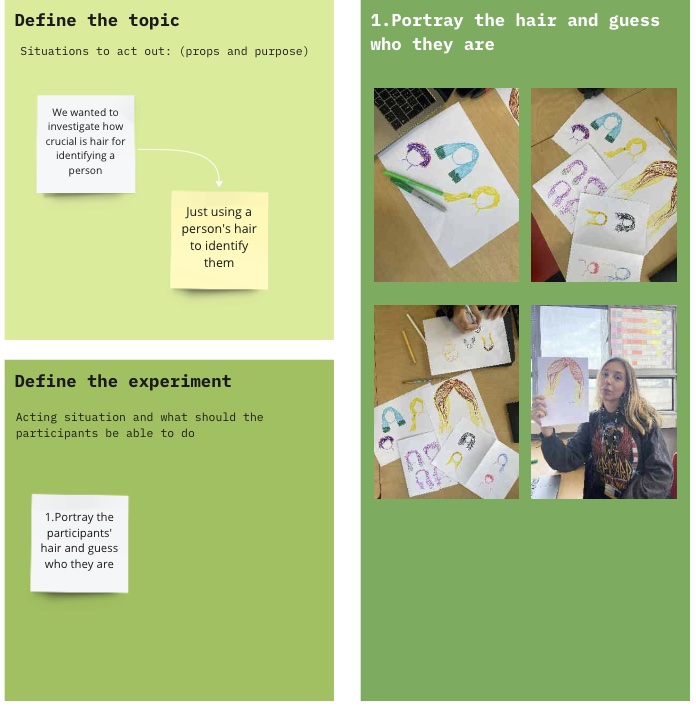
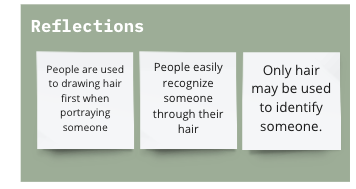
For getting in-depth understanding of others feeling about hair, we did directed storytelling research method. The stories we got from different gender, age, race gave us new perspectives.




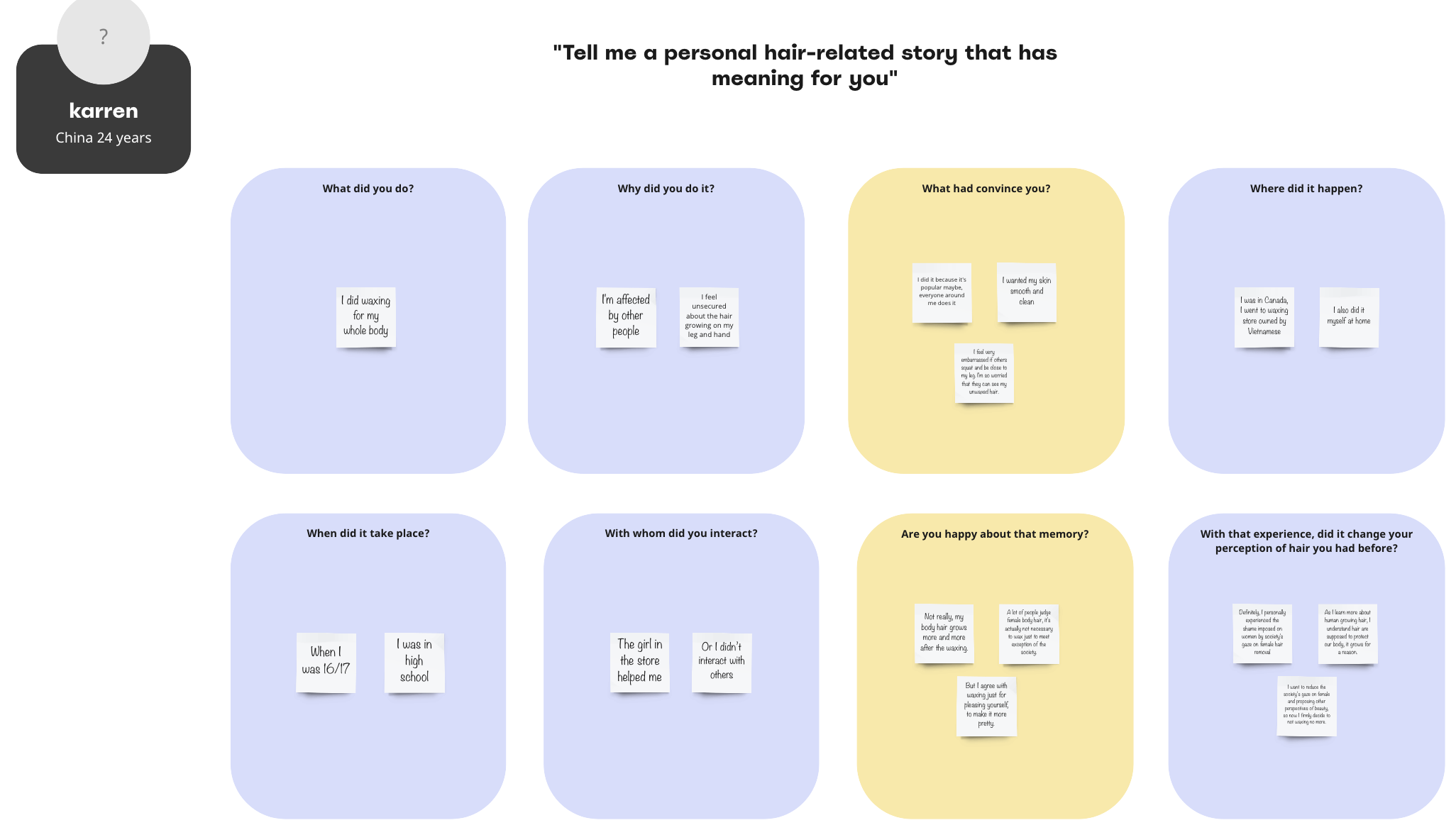

Insights from our search lead us to the conclusion that hair may be the most distinctive feature for identification. For instance, we probably frequently recognize ourselves in the class based on our hairstyle. We created a game based on the game “guess who”. We tried to draw a few people in our class with their hair, eyebrows, and beard that are recognizable. We print them out and pin them on a cardboard.
Game exploration:
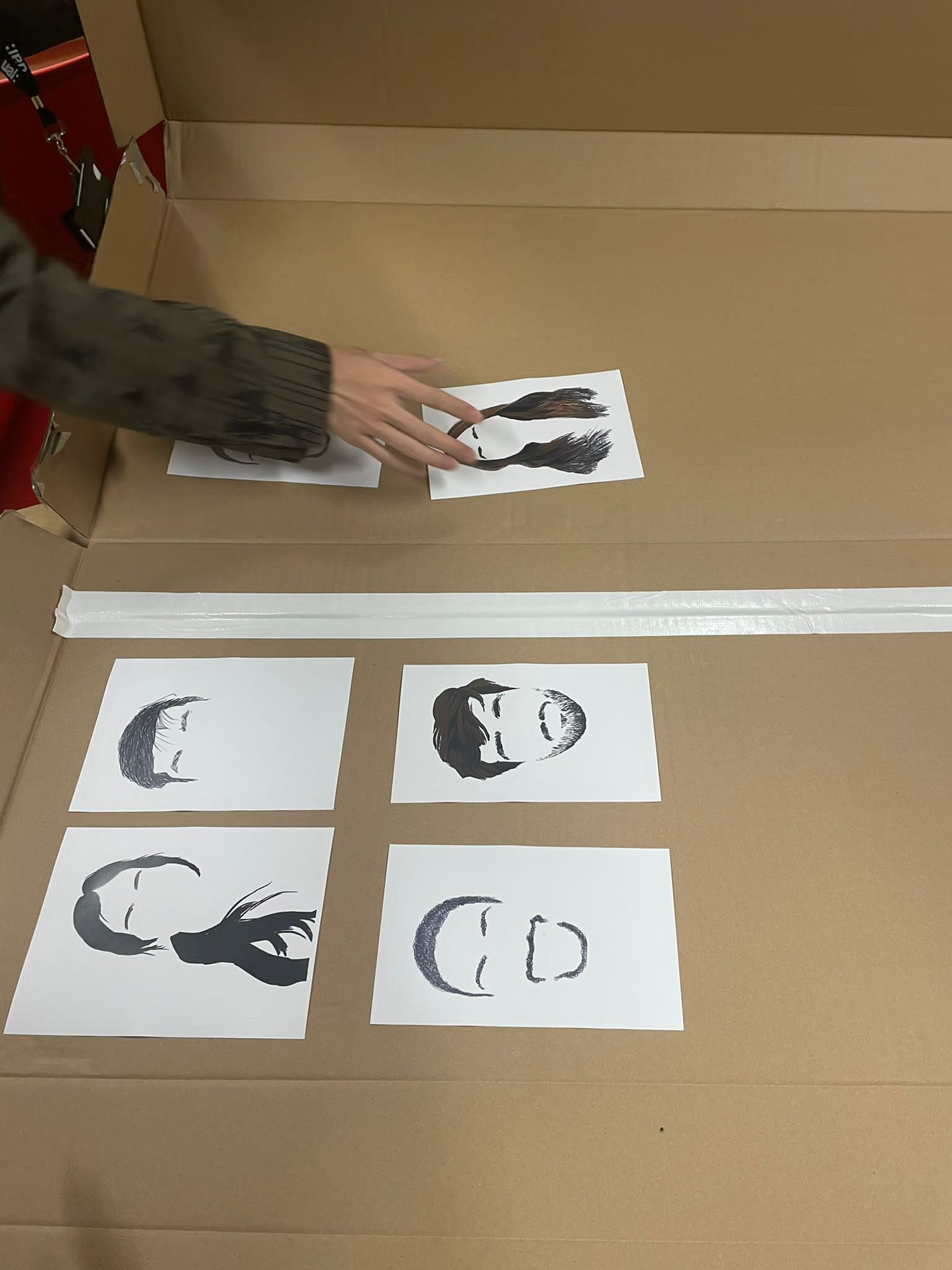


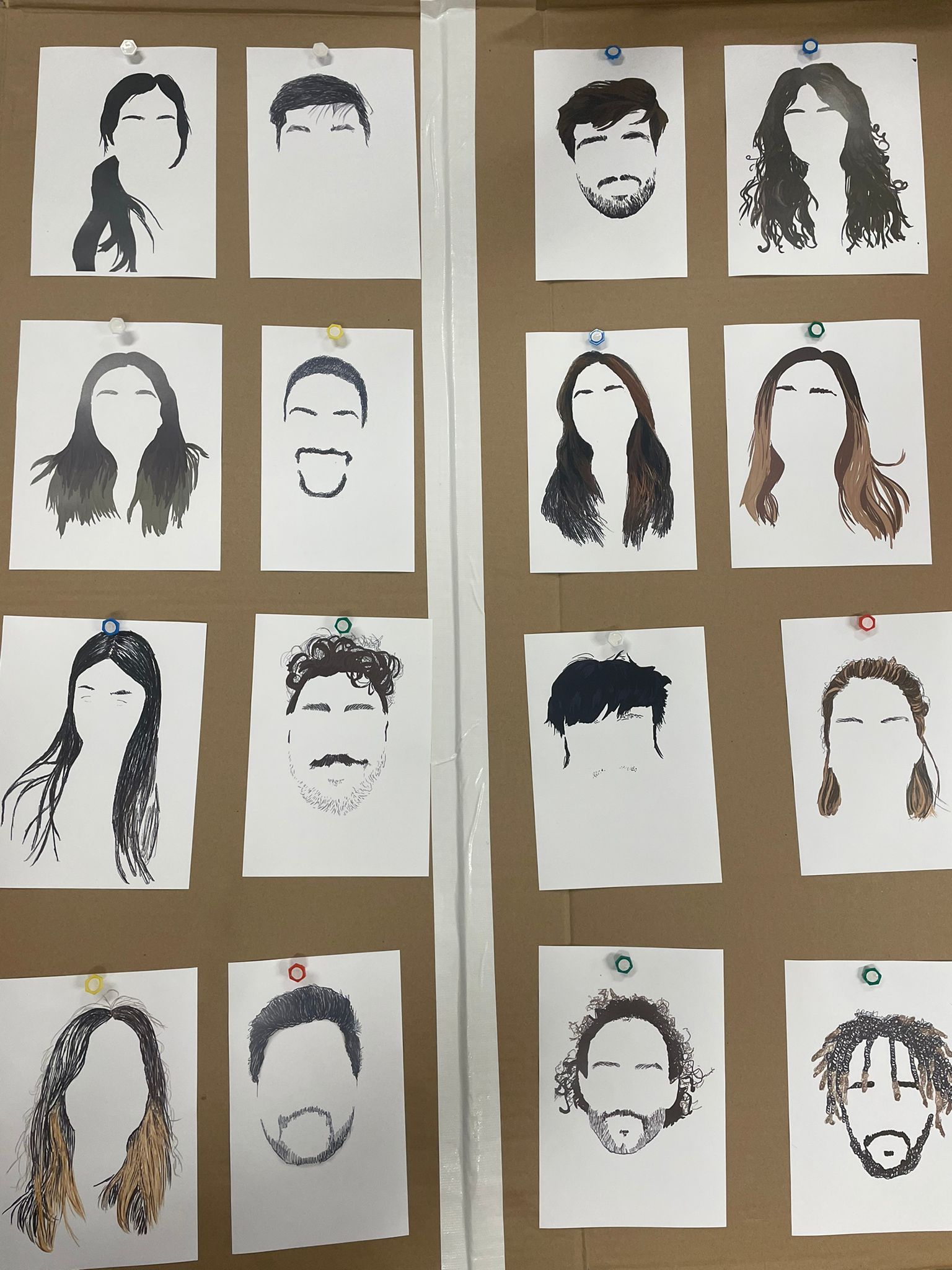
Two volunteers will play the game, one is thinking about someone and the other has to guess who it is. Volunteers can only ask question about hair and only ask YES/NO question. It has to be quick, like rapid fire questions.
Feedback:
- It’s quite easy to guess the person
- frame questions more dedicatedly/harder
- Research not too reflective to the prototype
- make comparison of different hairstyle on one person to see if we can guess who it is
- consider include real hair texture and more physical things
- prototype/concept is too generous
After hearing the feedback, we tried to revisit the research we did. In the directed storytelling research, we found person also feel emotions connected to hairs a lot(cut hair after breakup). Maybe we can try to include more things we found in the research to the prototype and make it more narrative.
We came up with 3 ideas, make paper/plastic/different material wig as exploring physical experience, build a suit that has hair everywhere as body hair can also be represented their identity, visualize stories that hide inside of hair as people interacted with them.
We found the last idea related to us the most, because we had a lot of stories gather from the directed storytelling research method. We decided to go further on this concept.


We came up with these sketches that demonstrated our idea and interactions. We want to divide hair to sections and each section represent a story as hairstyle changes with the stoy. By enhancing the experience, we want to use touch sensors to trigger sounds so that to tell the hidden stories of a person’s life.
Stories:
First day going to the university ( change hair colour)
Falling in love - ( hair as it is)
Breakup- ( cut hair to short)
Loved one's suffering ( losing hair naturally)
Wedding day ( braided with flowers)
These stories are from the research we did before, they came up after the summary and categorizing.






Sound recordings:
Volunteers experience:




Reflection:
We heard a lot of good feedbacks, the concept is clear, easy to feel related, sound is well represented to the stories. We are happy with how it turned out.